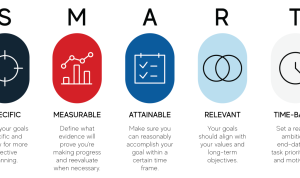The fashion and apparel industry is undergoing a monumental transformation, driven by the relentless march of technology and the ever-evolving habits of consumers. For decades, the retail landscape was a simple one: brick-and-mortar stores, glossy magazines, and a seasonal cycle of new collections. Today, that world feels almost ancient. The rise of e-commerce has not just created a new sales channel; it has fundamentally reshaped how we discover, shop for, and interact with fashion. This digital revolution is a complex and dynamic space, offering unprecedented opportunities for both established brands and agile newcomers.
In this new era, success hinges on a deep understanding of the online customer journey. It begins not with a physical store visit, but with a search query, an Instagram scroll, or an algorithm-driven recommendation. The online fashion transaction is a multi-layered process, where a compelling product image is just the first step. To capture and retain a customer’s attention, brands must create a seamless and immersive digital experience. This means investing in a user-friendly website with intuitive navigation, high-quality product photography and videos, and detailed, compelling descriptions.
One of the most significant shifts has been the move from a static, one-way conversation to a dynamic, two-way dialogue. Social media platforms like Instagram, TikTok, and Pinterest have become the new storefronts, where trends are born and brands can engage directly with their communities. Influencer marketing has emerged as a powerful tool, as consumers increasingly trust recommendations from their favorite content creators over traditional advertising. This shift in trust has made authenticity a highly valuable currency in the digital fashion space.
The technology powering these transactions is also evolving at a breakneck pace. Artificial intelligence (AI) and machine learning are no longer just buzzwords; they are actively shaping the consumer experience. AI-powered personalization engines analyze browsing history and purchase data to recommend products tailored to individual tastes, making the shopping experience feel more curated and less overwhelming. Virtual and augmented reality (AR) are also blurring the lines between the digital and physical worlds. Shoppers can now use AR filters to “try on” clothes and accessories from the comfort of their homes, reducing uncertainty and lowering return rates. This innovative technology addresses one of the biggest challenges of online apparel shopping: the inability to physically touch and try on items.
Beyond the front-end user experience, the back-end operations are equally critical for success. The speed and efficiency of a fashion e-commerce business depend on a robust logistics and supply chain system. Omnichannel retail, which seamlessly integrates online and offline sales channels, is becoming the gold standard. A customer should be able to buy an item online and pick it up in a physical store, or vice versa, without any friction. This model enhances convenience and leverages the strengths of both digital and physical retail.
However, with great opportunity comes significant competition. The digital marketplace is a crowded space, and simply listing products online is not enough. Brands must strategically position themselves to stand out. Search Engine Optimization (SEO) is no longer optional; it is the cornerstone of discoverability. By optimizing their websites with relevant keywords, high-quality content, and strong backlinks, fashion brands can ensure they appear at the top of search results when customers are looking for new clothes, shoes, or accessories. Content marketing, through blogs, newsletters, and social media posts, further establishes a brand as a thought leader and a source of inspiration, building a loyal following that transcends a single purchase.
The rise of the conscious consumer is another trend that is significantly impacting the online fashion industry. A growing number of shoppers are concerned about the environmental and social impact of their purchases. This has led to the proliferation of sustainable and ethical fashion brands. For these brands, transparency is a key selling point. They use their websites and social media to share stories about their supply chains, material sourcing, and fair labor practices. This storytelling approach builds trust and resonates deeply with a values-driven audience, proving that a brand’s mission is just as important as its products.
Looking ahead, the future of fashion e-commerce is about more than just transactions; it’s about building communities and creating unique experiences. Livestream shopping, where brands host live events to showcase and sell products in real-time, is gaining traction, particularly in Asia. This interactive format replicates the excitement of in-person shopping with the convenience of a digital platform. The integration of blockchain technology is also on the horizon, promising greater transparency and security by creating an immutable record of a garment’s journey from factory to customer.
In conclusion, the digital revolution has transformed the fashion and apparel industry from a traditional retail model to a vibrant, technology-driven ecosystem. The online marketplace is a complex tapestry woven with threads of innovation, data, and creativity. Success in this new landscape requires more than just great products; it demands a strategic approach to technology, a deep understanding of consumer behavior, and a commitment to authenticity and transparency. As the line between the digital and physical worlds continues to blur, the brands that can master this new reality will not only survive but thrive, shaping the future of how we all experience and interact with fashion.







